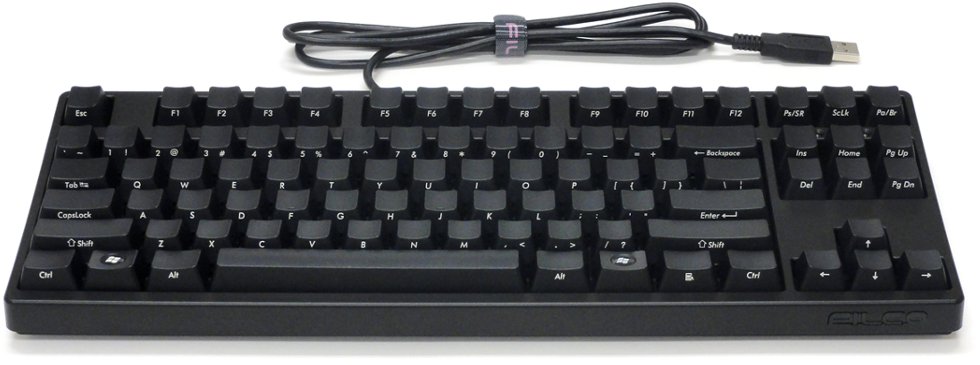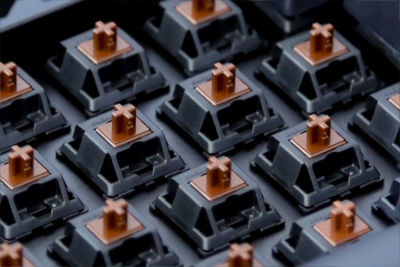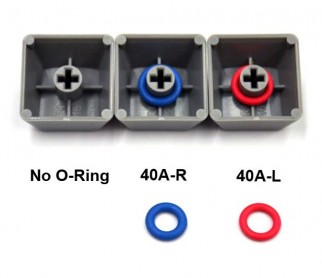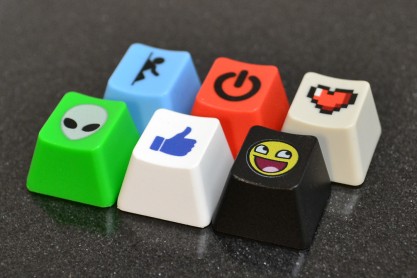In this post I get a bit more philisophical than technical. IT engineer’s no. 1 tool: the keyboard. A often overlooked peripheral, but a few optimizations can bring you a lot of joy.
Self-confident and trained keyboard usage can speed up your progress in projects dramatically. Here are a few tips to improve your keyboard life and get more joy out of typing.
Keyboard layout
Some people radically change keyboard layouts. I know Qwerty isn’t optimal, but Dvorak is just one bridge too far for me. There are some tweaks which make things easier in my daily life.
- Disable internationalization/dead keys! Dead keys are the worst if you’re doing any kind of programming or shell work. Every time you type a
\,'or"you have to press the spacebar to get the actual character, or hope that the next character you’re typing isn’t something that combines with one of these modifiers. So what about if I need a é, ï or å? You can use the old-skool Compose key, it’s a bit more work, but you don’t have to deal with dead keys anymore. This is how:- In Ubuntu, enable compose key by going to System Settings -> Keyboard -> Shortcuts -> Typing and set it to a key (I use Right Alt). How do you use it?
- Press the Compose Key, then type the modifier key (
',", etc.) and then type the character that should be modified. Do not press the keys at the same time, press them sequentially. - Example:
Right Alt->"->egives ë - Example:
Right Alt->,->cgives ç
- Ctrl-Caps Lock swap Old Unix machines could be ordered with a Unix style keyboard. What’s the difference with a normal keyboard? They had the
CtrlandCaps Lockkeys switched. Proponents say it helps with pinky aches, because you don’t have to reach as far to hitCtrl, which the average Unix guy does often. It’s a bit annoying to get used to though. What I did is changeCaps LocktoCtrl, leaveCtrlas it is and press both shift buttons at the same time to turn on Caps Lock. I hardly use Caps Lock anyways, and I can still use it if I need to.- There are several ways to do this. The easiest is to install
gnome-tweak-tool. - Under Typing I set the following options:
- Miscellaneous compatibility options: Both shift keys together toggle caps lock
- Ctrl key position: Caps Lock as Ctrl
- There are several ways to do this. The easiest is to install
Mechanical keyboards
I’m not saving the best ‘till last. A good-quality mechanical keyboard is so much more enjoyable to type on. It takes less effort to press keys, and it will give you tactile (or audible) feedback when you press a key. This usually results in a faster typing speed. If you typed on a mechanical keyboard and go back to rubber-dome keyboards, it’ll feel like typing on a sponge!
Lots of guides have been written about mechanical keyboards. An excellent resource is the Mechanical keyboard guide at overclock.net. There are some thing you ought to consider:
-
When working in a office environment, please, please, please consider your colleagues and get keyboard switches with tactile but not audible feedback. Even with Cherry MX Brown switches, “bottoming out” (hitting the keyboard backplate when you type too hard) really get’s on people’s nerves after a while. I recommend getting rubber O-rings for additional dampening.
-
Think about getting a tenkeyless keyboard. Tenkeyless keyboards do not have the num pad section like most keyboards do. Why? Most engineers don’t type numbers that much, but it does get your keyboard more directly in front of you, limiting the twisting in your wrists. It will also be easier to switch between keyboard and mouse, because the gap between your main typing area (letters) and the mouse is less. I have used a tenkeyless keyboard for years now and I hardly miss the num pad. It does seem a bit odd that you pay as much for a tenkeyless keyboard as you do for a normal one.
-
Pimp your keyboard Pump up your nerd-cred with customized keys. A lot of vendors on the internet sell keycaps for Cherry MX switches, you can even get custom ones made. I have “ninja” keys (the lettering is on the front of the key instead of the top), a red ESC key and Sun Microsystems keys instead of Windows keys. You can definitely tell it’s my keyboard, because my username is on the space bar.
If you opt to go for a mechanical keyboard, make sure you pick the right keyboard layout. Nothing is more annoying that being used to typing on an ANSI keyboard and getting an ISO layout.
Images









